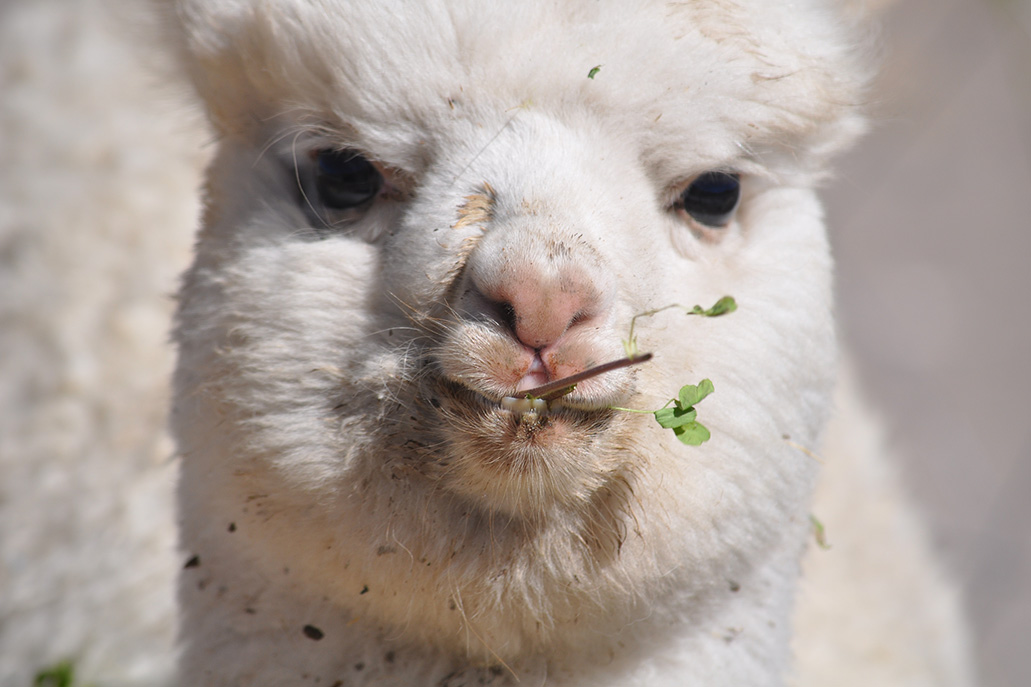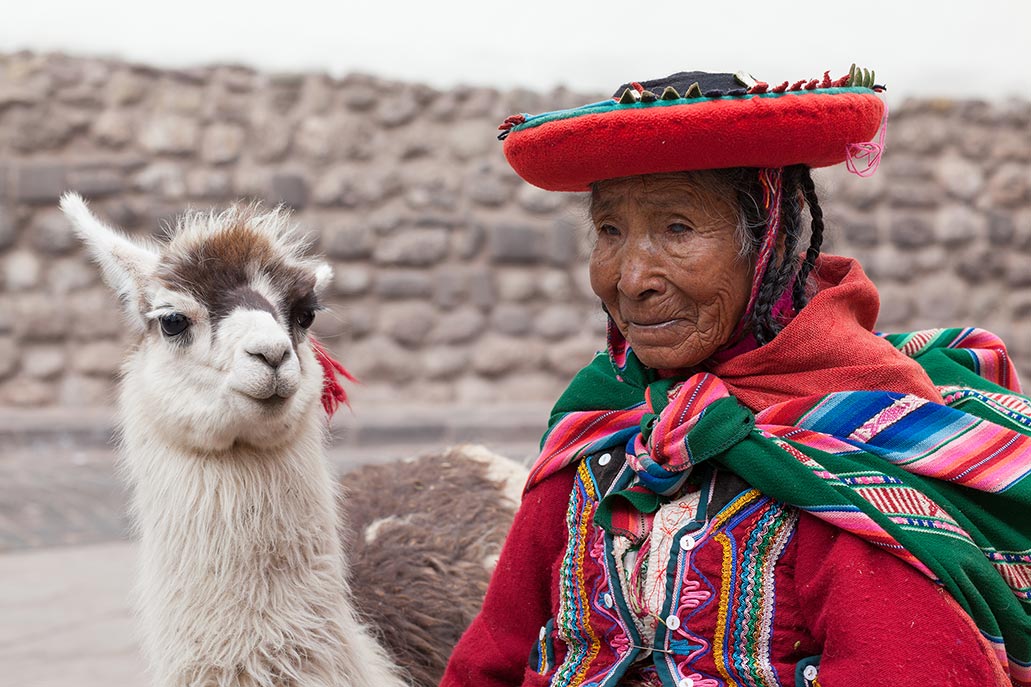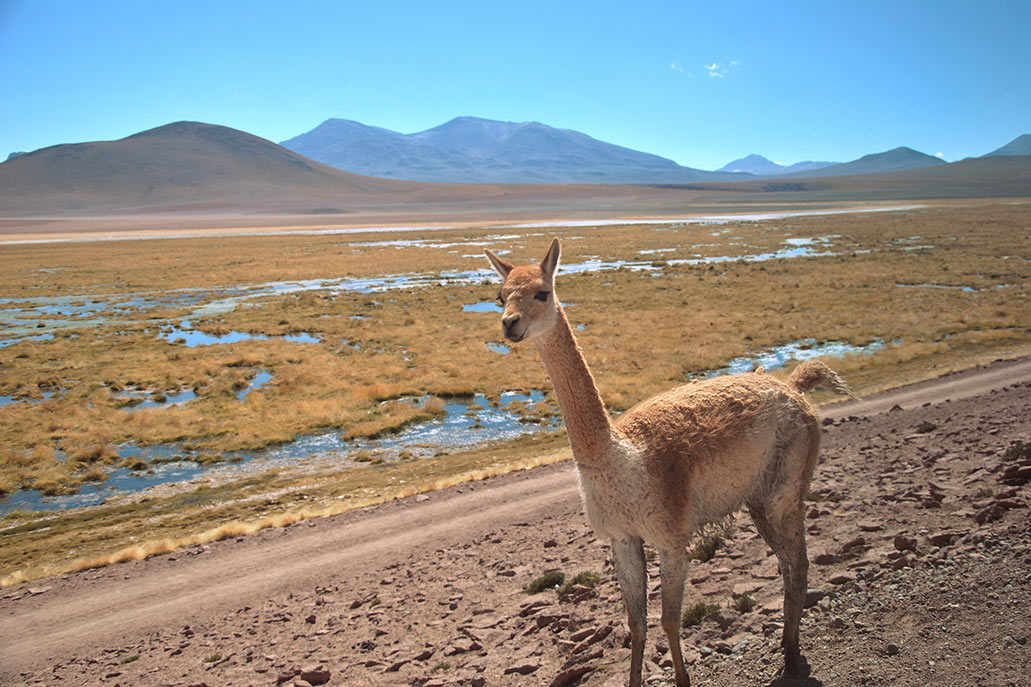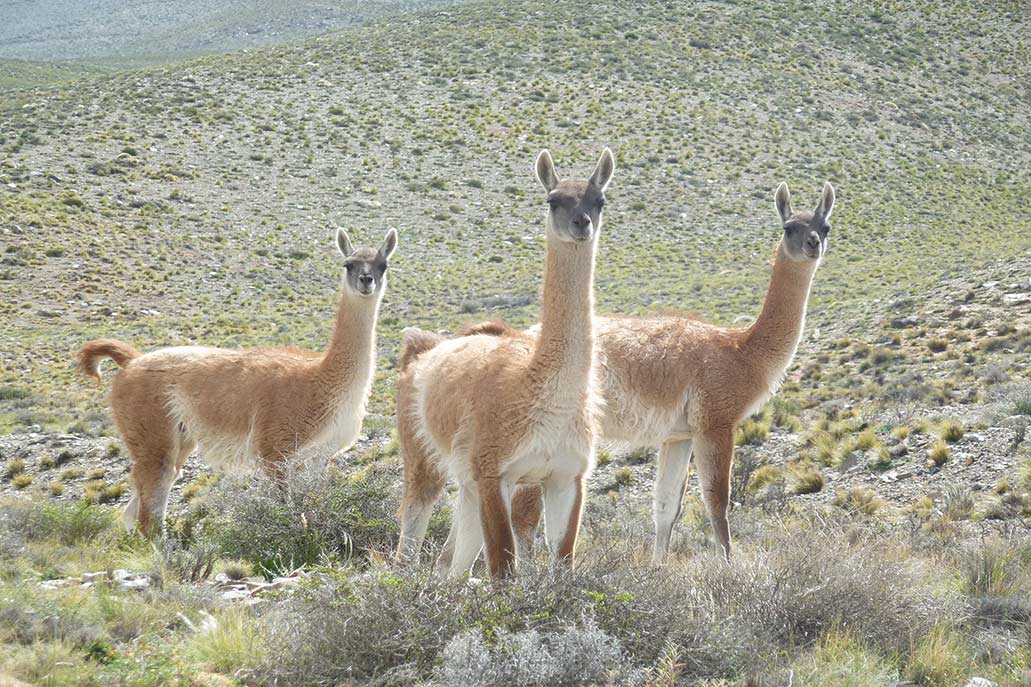The 4 auquénids of Peru
South American camelids are species of mammals that range mainly across the great Andes Mountains, from Tierra del Fuego to Ecuador and Colombia. Currently in Peru there are four species: the llama, the alpaca, the vicuña and the guanaco. However, it is estimated that there were up to eight extinct species. They are mainly characterized by being herbivores, by their long necks and long legs. Learn more about this famous species when visiting Peru.
Can I see auquénids when visiting Machu Picchu? – Machu Picchu is the famous Inca citadel visited by around 1.5 million people a year. Many visitors come there attracted by the history of the Incas, its fabulous architecture, the world-famous photos, but also to get up close and personal with the South American auquénids. At the archaeological site you can see dozens of llamas (Lama glama), a domesticated species that already inhabited the place in the time of the Incas. The animals are docile, but should not be disturbed. Tourists, from a distance, can get the best photo of their lives with a llama and Machu Picchu in the background.
The llama
The llama (Lama glama) is a species of auquénid that was domesticated from the guanaco thousands of years ago, throughout the entire Andes Mountains.
It weighs between 130 and 150 kilos (330 pounds). The tallest species can reach 1.90 meters in height (6.2 ft). As a pack animal, it can carry up to 34 kilos and travel a distance of up to 32 kilometers in one day.
The llama’s diet is based on green grass and, at high altitudes, icchu (wild grass). Just as the camel, a distant relative, can survive with a small amount of water per day.
The Incas used llamas for transportation, as well as their wool to make clothing, especially ponchos, rugs, ropes and fabrics. Today, llamas inhabit a large part of the Andes Mountains in regions of Peru, Colombia, Bolivia, Chile, Argentina and Ecuador.
It is estimated that throughout Peru there is a population of 746,269 llamas (according to the agricultural census in 2012). In Cusco you can see llamas almost everywhere: in the streets of the historic city or in the various towns of the Sacred Valley of the Incas: Pisac, Yucay, Ollantaytambo, Chinchero, Maras and more.
The llama is one of the most representative species of the fauna of Cusco.
- Family Class mammalia, order artiodactyla, family camelidae, subfamily camelinae, tribe lamini, gender lama, species L. glama.
- Importance Since ancient times, the llama has been used as a meat animal, as well as its wool and meat. Its guano is also used as fertilizer.
- Where to see llamas in Cusco? In the different tourist attractions of Cusco, such as the Sacred Valley of the Incas, the historic center of Cusco, the Humantay lagoon, the 7 Colors Mountain and even the Inca citadel of Machu Picchu.
The alpaca
The alpaca (Vicugna pacos) is a species of camelid domesticated by the Andean population approximately six thousand years ago. They are characterized by having a small body, elongated neck, small head and thick fur. It has a biological similarity with the vicuña.
The alpaca has an average weight of 64 kilos (141 pounds). They can reach a height of 90 centimeters (2.9 ft). There are two types of alpacas, the wakaya and the suri, whose wool differs in its texture. The first has a curly and compact coat (the vast majority of alpacas are wakaya). Meanwhile, the Suri alpaca has a longer and silkier coat, with great commercial value.
It is estimated that the alpaca can live approximately 20 years. Due to its domestic nature, its wool is highly appreciated throughout the world for its softness, lightness and warmth. Its natural color is very varied: from white, black, beige and up to twenty-two other varieties.
Alpacas differ from other camelids mainly by the thickness of their wool. There are coats of different colors and textures depending on their breeding. The Incas highly valued alpaca wool, although they were also used as a source of food.
Currently, Cusqueños export alpaca fiber abroad, such as the United States, Australia, the United Kingdom and more. Peru is the main exporter of alpaca fiber in the world.
Alpacas inhabit the current territories of Peru, Bolivia, Argentina, Chile and Ecuador. In addition, they have been raised in the United States, New Zealand and some European countries.
The alpaca is one of the most emblematic mammals of Cusco, whose fiber can be found in the main tourist shopping centers of the city.
- Family Class mammalia, order artiodactyla, family camelidae, gender vicugna, especies V. pacos.
- Importance Alpaca wool is highly appreciated and marketed for the production of ponchos, scarves, vests, sweaters, etc. In addition, its meat is appreciated for its high nutritional value.
- Where to see alpacas in Cusco? Llamas are domestic animals that can be seen in the historic center of Cusco, the 7 Colors Mountain, the Humantay Lagoon, as well as the textile centers of the town of Chinchero (in the Sacred Valley of the Incas).
The vicuna
The vicuña (Vicugna vicugna) is a non-domesticated species of camelid that is similar to the alpaca. It is the smallest species of Andean camelid as it reaches a maximum height of 160 centimeters from head to toe (5.2 ft). and a maximum weight of 50 kilos (110 pounds). Its habitat is the Andean region, above 3,200 meters above sea level.
Vicuñas are characterized by having long, thin legs, as well as a beige or brown color on the trunk while a white chest with slight variations. They inhabit the highest regions of the Andes Mountains in Peru, Bolivia, Argentina, Chile and Ecuador.
There are two species of vicuñas: the vicugna species and the mensalis species. The first inhabits the coldest regions in the south (such as Argentina and Chile). The second, the Andean regions of Peru and Bolivia. The most notable differences are coat color and size. However, 73% of the species is the one that inhabits the regions of Peru, Bolivia and the northern region of Chile.
The fiber of the vicuña is one of the finest in the world, which is why it was highly valued before Inca times. They used measured techniques to extract their fiber without harming their reproduction. Unfortunately this has not happened since the Spanish conquest (16th century). Over hundreds of years, indiscriminate hunting endangered this species.
Currently, the vicuña has a population estimated at 218,000 species in Peruvian territory. Its distribution is protected by the authorities of each country. Therefore, the vicuña is in a state of minor concern.
The vicuña is present on many coats of arms of countries and cities along the Andes Mountains. It is found in the national coat of arms of Peru.
- Family Class mammalia, order artiodactyla, family camelidae, gender vicugna, especies V. vicugna.
- Importance The vicuña has a very fine fiber (up to 3 thousand dollars per meter of fiber). However, its commercialization is prohibited without the respective authorization. In Peru they are property of peasant communities.
- Where to see vicunas in Cusco? In specialized animal care centers such as the Manos de la Comunidad textile center (9 kilometers from Cusco) or the Awanakancha camelid theme park (22 kilometers from Cusco).
The guanaco
The guanaco (Lama guanicoe) is a species of non-domesticated camelid related to the camel. Its domestication, hundreds of years ago, gave rise to the llama, another species of South American camelid. Its main characteristic is its large size.
It can reach up to 1.90 meters (6.2 ft) and weigh up to 140 kilos (308 pounds). Unlike the llama or alpaca, it has a black spot on its head. Also for having a brown back, short tail, elongated neck, as well as pointed ears.
Its habitat mainly comprises the cold mountains of Patagonia in Argentina, as well as Tierra del Fuego in Chile. Guanacos also exist in Peru, mainly in the Calipuy National Reserve in the La Libertad region. There, up to 1,200 species of guanacos were recorded in their natural habitat.
In total it is estimated that there are 3,810 guanacos in Peru. The majority are found in the regions of Ayacucho, Arequipa and La Libertad. However, there are also species in hatcheries in different parts of Peru.
The fiber of the guanaco is considered to be of higher quality than that of the alpaca, but not as fine as that of the vicuña. This is marketed mainly in Argentina and Chile, who are also its largest producers in the world.
The Incas and the cultures that preceded the Incas hunted guanacos for their meat, which was highly valued for its high nutritional value. The chronicler Pedro Cieza de León points out that the Incas hunted the guanaco to use its meat as charqui (dehydrated meat) to feed their army.
In Peru, the guanaco does not have the fame of the llama, the alpaca or the vicuña. However, in countries like Argentina and Chile it is highly appreciated and its fiber is marketed around the world.
- Family Class mammalia, order artiodactyla, family camelidae, gender lama, especies L. guanicoe.
- Importance Alpaca fiber is highly valued, although it is difficult to market due to the wild state of the auquénid. Its wool is finer than that of the alpaca, but less than that of the vicuña. In some South American countries, such as Argentina, domestication is being sought.
- Where to see guanacos in Cusco? In specialized animal care centers such as the Manos de la Comunidad textile center (9 kilometers from Cusco) or the Awanakancha camelid theme park (22 kilometers from Cusco). In Peru, also, in the National Sanctuary of Calipuy.
By Machupicchu Terra – Last updated, March 21, 2024



